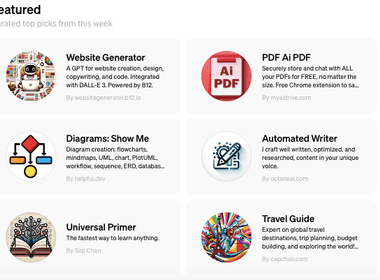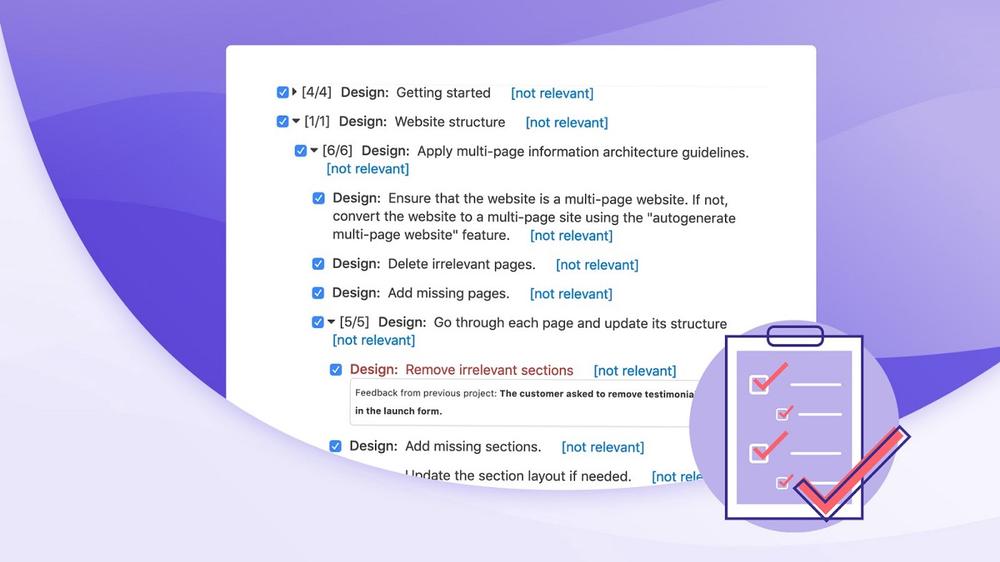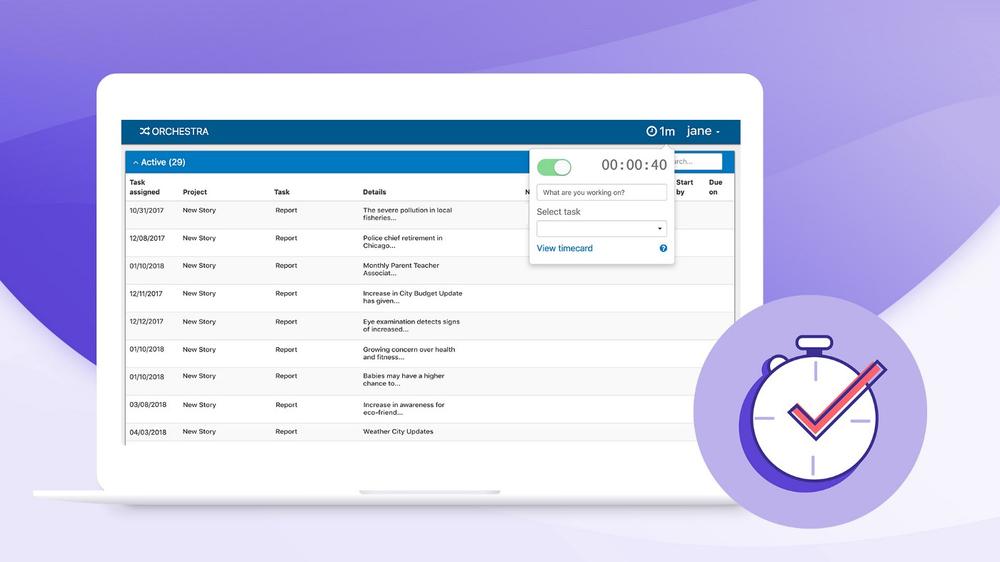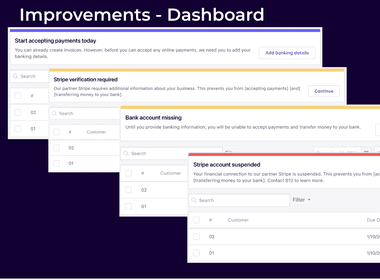Introducing Orchestra 1.0, an open-source system for Robotic Process Automation 🚀
Today we’re excited to unveil an updated version of Orchestra that makes project management and team communication even easier.
We initially open-sourced Orchestra v0.1.0 in September 2015 with key features like human + machine workflows, hierarchical review, and expertise certification. After years of engineering and design, we’re psyched to announce Orchestra 1.0!
Orchestra is an open-source Robotic Process Automation (RPA) system that organizes teams of human experts and machines to work together. Orchestra automates repetitive tasks in team-based knowledge work so teams work faster and experts spend more time on creative and analytical tasks.
With Orchestra 1.0, we’ve added new features that allow cross-geography teams to work more efficiently and deliver higher quality work. We use it at B12 to quickly pull together experts to launch and update excellent websites for our customers.
Orchestra can be used to automate a wide variety of work, such as back-office tasks, professional service workflows, and complex analytical work. We’re eager to explore all the ways that Orchestra’s added functionality can help other companies and industries!
So, what’s new in Orchestra 1.0?
Orchestra 1.0 is full of powerful new features that support teams and improve how people do complex creative work. Through many of these features, machines provide automated scaffolds so that the experts on each project can focus on the tasks they are uniquely positioned to complete.
StaffBot
StaffBot is a quick and effortless way to staff projects. It brings an expert on a project in minutes and needs no human time to do so!
StaffBot either automatically finds workers for a task based on custom logic, or reaches out to qualified workers and offers them a task. Workers can accept or reject the task via Slack or email.
Before StaffBot, our customer success team often spent an hour or two finding an expert who was qualified for a project and waited another ~24 hours for confirmation that the expert was available. Because StaffBot always knows which workers are available, our projects are staffed and started in minutes.
SanityBot
SanityBot handles the nitpicky and often annoying details of project management. It periodically checks the status of a project and alerts the project team if something seems off.
SanityBot runs sanity checks every few minutes based on various aspects of project status to determine what’s on track and what’s at risk. For example, if a project’s designer has been offline for a few days, or if you’re close to missing a major client deadline, SanityBot will alert team members via Slack that the project conditions aren’t being met.
SanityBot can’t solve problems, but it makes it easier to identify them so you can scale your attention across many more projects. At B12, SanityBot allows our customer success team and experts to focus on solving problems, rather than spend their time identifying them across the tens of projects they are contributing to at a time.
Nested self-pruning checklists
Since its initial release, Orchestra has offered hierarchical review, which allows experts to give feedback to other experts, boosting the quality of their work while offering mentorship.
In this process, core experts submit a task once their work is complete. The completed task is sent to an available expert reviewer. Expert reviewers can either accept the task (select it for further review or mark it as complete) or return the task (give feedback to the core expert and request changes).
Orchestra 1.0 features an effective way for that review process, which used to be unstructured, to take structure. For critical aspects of a project, experts can use dynamic checklists to properly complete a project. For example, our checklist to complete a customer’s website project includes 153 items and self-prunes depending on the project type. Dynamic checklists allow experts to create a customized checklist by skipping the guidelines that they consider irrelevant to their project.
When it’s time for a reviewer to provide feedback, the checklist serves as a natural scaffold for that feedback. Reviewers can leave feedback on individual checklist items to reinforce important guidelines, and the checklist reminds experts of feedback they received on future projects.
Dynamic checklists and contextual reviewer feedback came out of Aditya Bharadwaj’s summer research internship. B12ers Pao Siangliulue and Adam Marcus are grateful to have collaborated with Aditya and his Ph.D. advisor Kurt Luther, on a CHI 2019 paper on this topic, which we’ll be presenting in May!
Time tracking
Time tracking records how long it takes a person or machine to complete a task. This helps us understand how long a project or task takes and also helps us accurately pay our experts.
Orchestra’s time tracking provides a timer widget that experts can toggle on to track their time spent working on a task. After the timer starts, the expert can add a description and specify the task they’re working on. If the timer is started in a task interface, the task field is pre-populated.
Once the expert stops the timer, a time entry is automatically created for the amount of time worked. The expert can go to the timecard page to edit and manually add time entries. Orchestra’s timecard page shows all time entries for the current work week, grouped by date.
The benefits of using Robotic Process Automation 🤖
Orchestra is the only open-source example of Robotic Process Automation (RPA) on the market. RPA automates repetitive, rules-based processes. Unlike most RPA tools, Orchestra doesn’t require an expensive license. It’s available under the Apache 2 license and is free to use!
RPA is quickly gaining momentum as businesses begin to understand how it can streamline repeatable processes and free people to concentrate on more engaging work. Orchestra workflows show the benefits of RPA from day one, including:
- Increased accuracy and consistency (goodbye, human error 👋)
- Less time spent coordinating projects
- Fewer dollars spent on identifying experts to staff to projects
- Improved reporting and compliance
When businesses use a system like Orchestra to manage their processes, they’re able to do a better job allocating expertise and work more productively.
Orchestra at B12 and beyond 🌓
We use Orchestra to manage our human + machine teams, which build and refine websites for B12 customers. Orchestra frees up our experts to focus on more stimulating tasks, learn new skills, and mentor others. It also helps us quickly assemble flash teams to perform complex creative tasks.
As RPA adoption expands commercially, we can imagine Orchestra’s reach growing in both creative and analytical fields. When we rolled out Orchestra v.0.1.0, we included an example workflow of a newsroom. The workflow calls for more experienced reporters, photographers, and editors to mentor entry-level ones, and various tasks like image cropping and resizing are completed automatically using machines.
More than three years later, we can imagine leveraging Orchestra in industries with high volumes of manual data input, including human resources, insurance, and health care.
With Orchestra, machines can perform data extraction so employees can spend time studying outputs. We think it’s likely that there’s an RPA use case for virtually every industry.
The future looks bright, and open!
We believe that the key to furthering automation and the virtual workforce depends on sharing our resources and collaborating with our community. To that end, Orchestra has been open-sourced since we introduced it in 2015.
We know it’s unusual to open-source a core part of a company’s secret sauce. We did so intentionally because we want members of the community to contribute and improve Orchestra, not just for the sake of B12, but for the broader community. Working together on this will bring us one step closer to our mission of building a brighter future of work.
We hope Orchestra can help you automate work for your team. If you’re interested in learning more, check out our code or reach out on Gitter!
Read next
See all
OpenAI features B12’s Website Generator in the GPT Store
Create and customize your website directly in ChatGPT using DALL-E
Read now
Lightning-fast website creation with B12's generative AI
Generate your tailored website in one click. To make edits, regenerate any section instantly.
Read now

